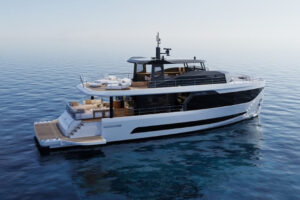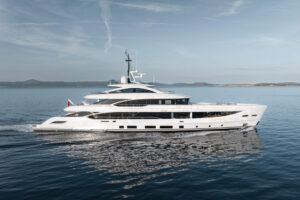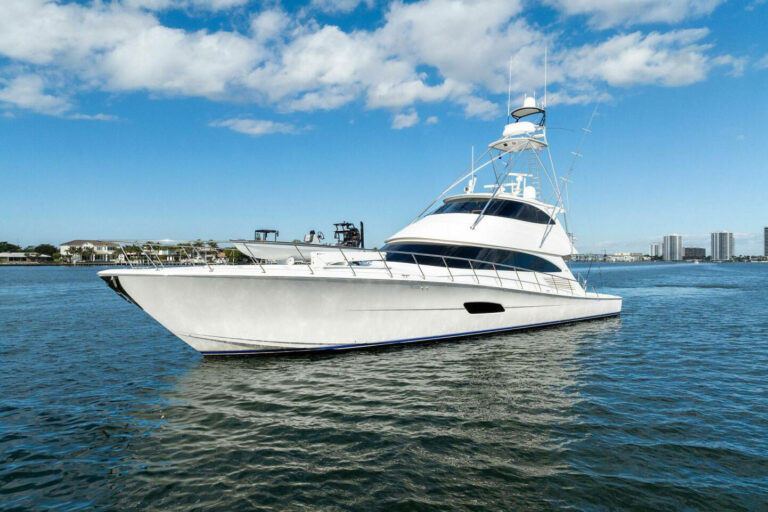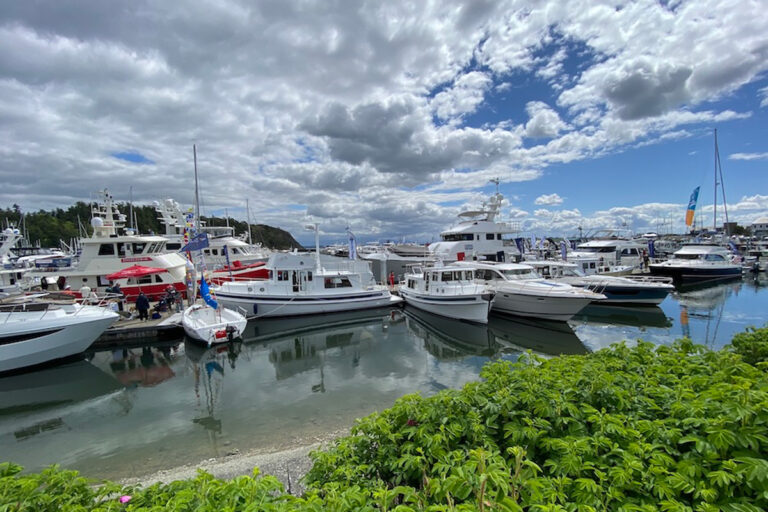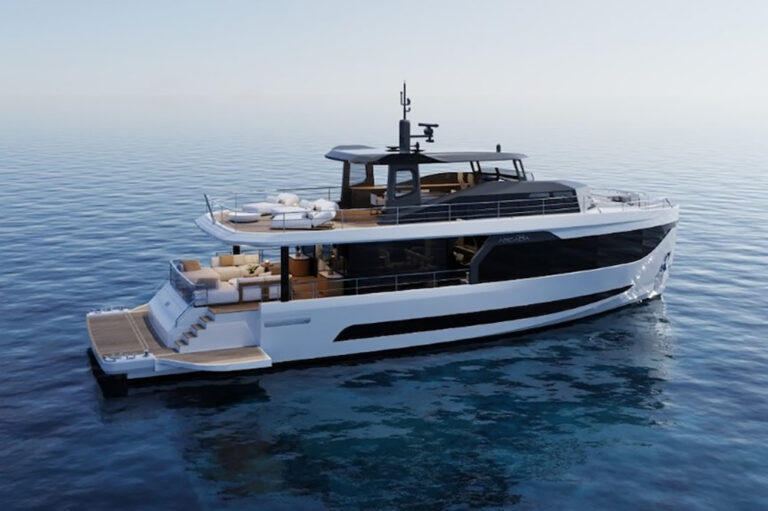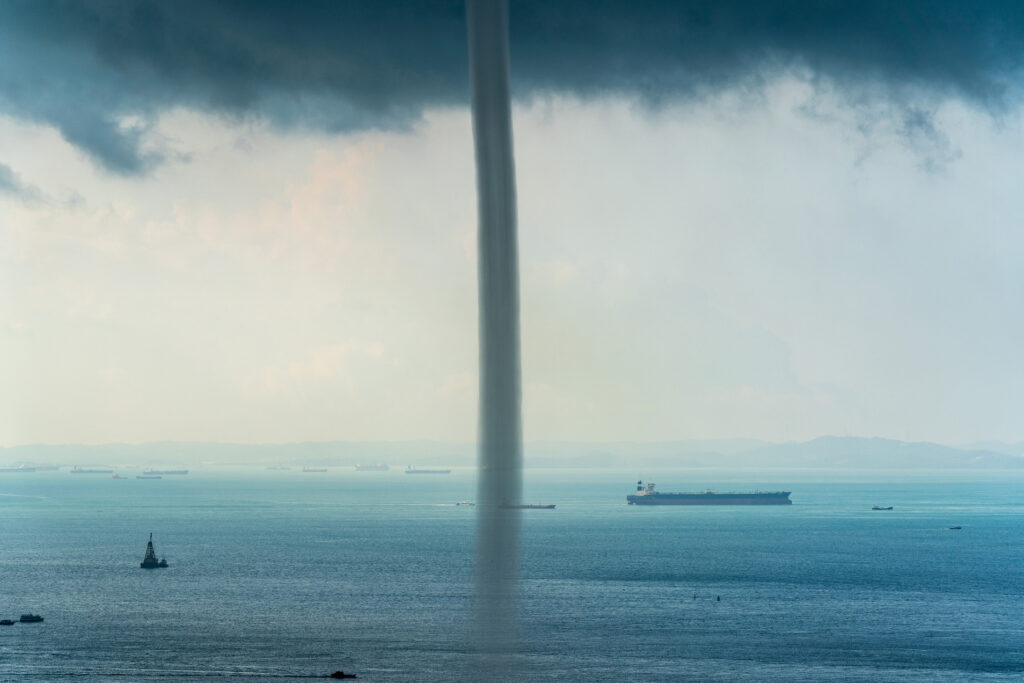
Two superyacht incidents occurring within two months of each other in the Mediterranean are prompting experts to assess what went wrong and how to more safely navigate the high seas.
On July 22, the superyacht Venus owned by Laurene Powell Jobs –widow of former Apple CEO Steve Jobs– collided with another vessel off the coast of Italy. The incident was captured on video where crew members can be heard yelling as the ships drew nearer and bumped into each other.
On Monday, superyacht Bayesian owned by British technology businessman Mike Lynch was sunk during a storm off the coast of Sicily. The Independent reported that the Bayesian was carrying 22 people at the time, and Italian officials fear Lynch and five others may have been trapped inside the boat.
More recent reporting by The Independent on Wednesday states that five bodies have been recovered from the shipwreck so far, with one person still missing. The deceased have not yet been identified.
What Happened to the Bayesian?
It’s still unknown what caused the Bayesian to sink, but a recent New York Times article states witnesses described seeing a possible waterspout during Monday’s storm.
The National Oceanic and Atmospheric Administration (NOAA) National Ocean Service describes two types of waterspouts: fair weather waterspouts and tornadic waterspouts.
“Tornadic waterspouts are tornadoes that form over water, or move from land to water,” NOAA’s National Ocean Service states on its website. “They have the same characteristics as a land tornado. They are associated with severe thunderstorms, and are often accompanied by high winds and seas, large hail, and frequent dangerous lightning.”
Fair weather waterspouts on the other hand are generally not associated with thunderstorms and form along the dark flat base of a line of developing cumulus clouds.
“While tornadic waterspouts develop downward in a thunderstorm, a fair weather waterspout develops on the surface of the water and works its way upward,” The National Ocean Service states. “By the time the funnel is visible, a fair weather waterspout is near maturity. Fair weather waterspouts form in light wind conditions so they normally move very little.”
Given this information, it’s more likely that Monday’s storms would have yielded a tornadic waterspout.
How to Avoid and Safely Navigate Waterspouts
NOAA’s Ocean Today website states that waterspouts are spotted in the Florida Keys more than any other place on earth. The organization warns sailors to watch the sky for certain types of clouds when trying to avoid these storms.
“In the summer, with light winds, look for a possible waterspout underneath a line of cumulus clouds with dark, flat bases,” Ocean Today states on its website. “Anytime of the year, a thunderstorm or line of thunderstorms, can produce very intense waterspouts.”
NOAA also advises captains to listen for special marine warnings about waterspout sightings that are broadcast on NOAA Weather Radio. In the case a waterspout is sighted, captains are advised to immediately head at a 90 degree angle from the apparent motion of the waterspout.
“Never try to navigate through a waterspout,” Ocean Today states. “Although waterspouts are usually weaker than tornadoes, they can still produce significant damage to you and your boat.”
Superyacht Captain Weighs in on Venus Collision
Superyacht Captain and social media influencer Kelly Gordon provided analysis of the Venus’ collision. She said that while there are many actions that could have been taken to avoid the collision, incidents like this one can happen quickly and allow minimal time to react.
“However, alarms should have been set on each vessel that would notify crew when another vessel is within a certain distance of theirs, wind alarms for when wind speeds exceed certain limits, anchor alarms to indicate drag, use of radar, and a proper bridge watch, to name a few,” Gordon told Yachting in an emailed statement. “One would think that they had time to react, but maybe not. Weighing anchor and maneuvering in these conditions can be extremely difficult. Forward thinking and precautionary measures can never be understated regardless of the forecasted conditions.”
Gordon said that the individuals heard yelling in the video did not appear to be in uniform and were likely guests. While the video doesn’t make it clear whether or not the captains were communicating via radio, Gordon affirmed that they should have been doing so well in advance to this collision.
“You can hear that Lady Moura did sound their horn,” Gordon said. “What is interesting is that it was only one long blast and should have been 5 short blasts to indicate danger. Regardless, a blast was made and that would have gained the attention of a proper watchman. Again, it’s obvious that there was not a proper bridge watch being maintained on Venus, but why? While there are numerous errors that were made in this instance the most notable is that Venus did not have a proper bridge watch, but again, why not? Was it complete and gross negligence or were there demands placed on the captain and crew that caused them to be under crewed and overworked-this is often the case in this industry. …”
When it comes to reducing damage from this kind of accident, Gordon said that mitigating a collision happens well in advance of the collision.
“Collisions are meant to be prevented and not reacted to after it has occurred,” Gordon said. “I can’t emphasize enough the importance of a proper bridge watch and use of all means available to execute that watch. Not only is it important to utilize all means of equipment available, but also your senses. Action needs to be taken well in advance. You aren’t just on watch for your own vessel, but also for others that are around you as well.”
Gordon stresses that she is not judging the actions taken by other captains, who might just lack the resources and staff to do their job safely.
“I am not one to judge another captain’s actions,” Gordon said. “Being a captain is a very stressful and demanding job and I have long expressed to my crew that I would never be one to judge the actions of another. In defense of the captain and crew one has to ask-were they under crewed? Did the owners put extraneous demands and pressures on them? Were they allowed to maintain proper work/rest hours? Was proper training provided? Yes, a master of this size of vessel should be extremely experienced, but you just don’t know what the crew were fully up against.”


